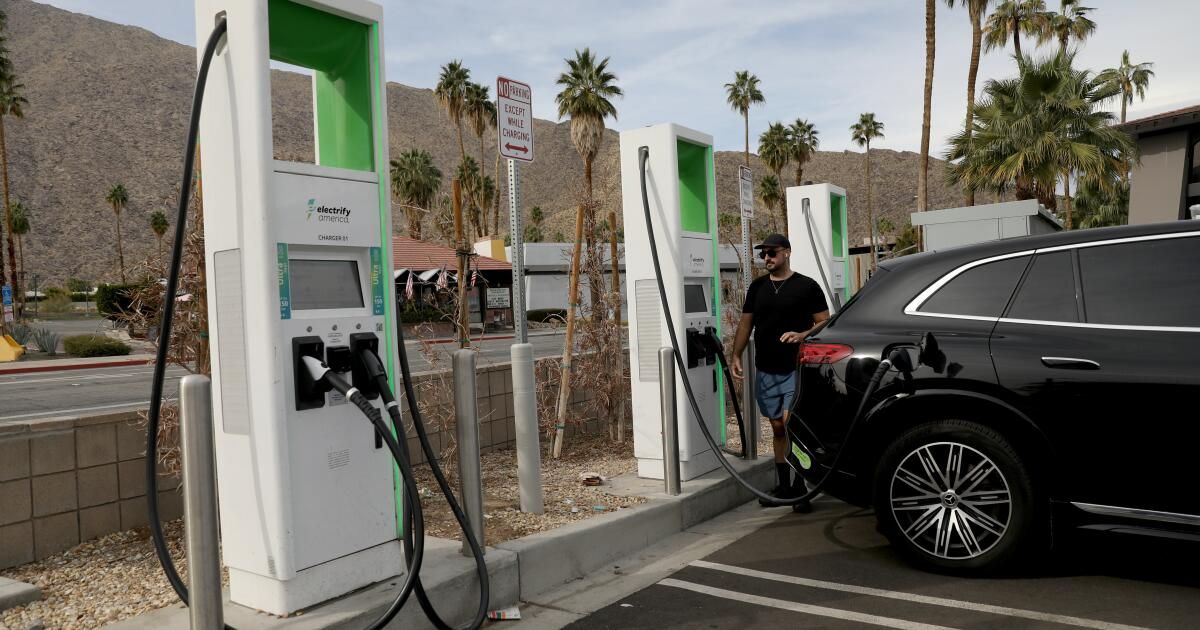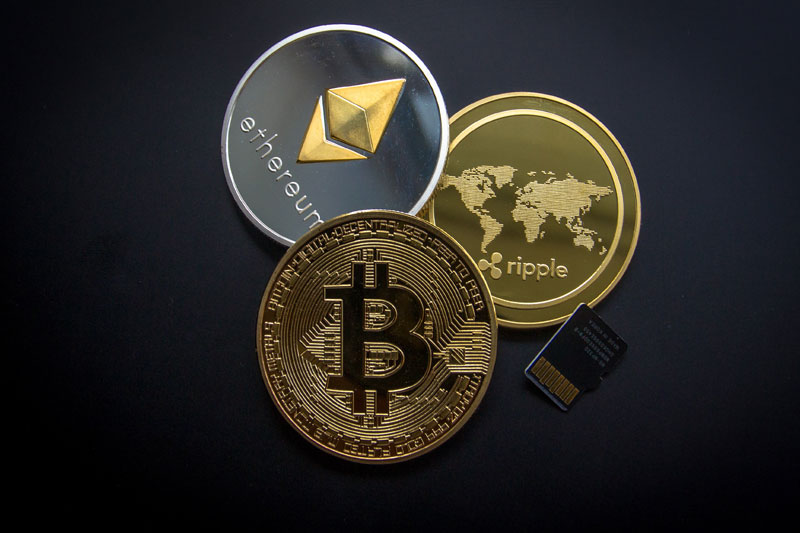The electric vehicle market is mired in uncertainty. Electric vehicle sales growth has slowed; automakers are withdrawing production of electric vehicles; The politics around the issue are getting ugly, as the very idea of driving an electric vehicle has entered the culture wars.
But one analyst says there's no need to worry: “Our long-term prospects for electric vehicles remain bright.”
This is according to market researcher BloombergNEF, which published the 2024 version of its annual electric vehicle outlook report on Wednesday.
Aggressive and impactful reporting on climate change, the environment, health and science.
By 2030, according to the report, 45% of global passenger vehicle sales will be electric vehicles. That figure will rise to 73% by 2040, still less than what the world needs to reach net-zero emissions in transportation, the company says, but enough to achieve significant reductions in climate-changing carbon emissions.
The long-term outlook adds some gloss to the latest news, especially in the US and California, where a slowdown in electric vehicle sales, led by Tesla, has spanned two quarters, defying climate targets. of the state.
A global survey by consulting firm McKinsey, also released Wednesday, included this surprise: 29% of electric vehicle owners told McKinsey they plan to replace the electric vehicle they purchased with a gasoline or diesel car, a figure that jumps to 38% for US EV owners.
Phillip Kampshoff, who directs McKinsey's Center for Future Mobility in the Americas, said he had seen electric vehicle sales as “a one-way street. Once you buy it, you're hooked on an electric vehicle. But that's not what the data shows.”
Under a 2020 edict from Gov. Gavin Newsom, automakers must phase out sales in California of new fossil fuel cars by 2035, when only what the state calls “zero-emission vehicles” will be allowed. (The mandate allows 20% of those vehicles to be plug-in hybrids, which can run on fossil fuels.)
Eleven other states are following California's lead, although Virginia's Republican governor plans to retire before the end of the year.
In the United States, tough politics are affecting consumer attitudes toward electric vehicles, as presidential candidate Donald Trump and his supporters in Congress have made government regulations on emissions technology a major issue for MAGA conservatives. . Or, as BloombergNEF more gently puts it: “In the United States, market jitters stoked by the upcoming presidential election helped slow adoption this year.”
Beyond politics, the path to electric vehicle growth is fraught with danger, with different countries moving at different speeds and with different levels of commitment.
Today, “China, India and France are still showing signs of healthy growth, but the latest data from Germany, Italy and the United States are more worrying,” BloombergNEF said. Global sales of electric vehicles “will increase from 13.9 million in 2023 to more than 30 million in 2027,” despite the United States' lag.
Whatever the geography, consumer concerns about price, range, battery life and unreliable public charging continue to dampen many buyers' enthusiasm for electric vehicles. Consulting firm McKinsey and motor club AAA echo BloombergNEF's conclusions in their own recent forecasts.
But electric vehicle prices are falling, range is improving and large numbers of public chargers are being installed, all of which could revive sales growth.
Intention to buy
Consumers around the world are warming to the idea of buying an electric car, but they are doing so slowly. According to McKinsey, 14% of 30,000 respondents globally in 2021 said their next vehicle would be an electric vehicle. This year it is 18%.
It's a different story in the U.S., where consumer interest in purchasing an electric vehicle fell to 18% this year, according to the AAA survey, down from 23% in 2023. And nearly two-thirds reported it was unlikely they would buy an electric vehicle the next time they buy a car.
Interest in hybrids is increasing. One in three said they would probably buy a hybrid, a vehicle that adds a small battery to an internal combustion engine to improve fuel efficiency.
That's bad news for pure EV sales, at least for the foreseeable future, said Greg Brannon, AAA's head of automotive research. Early adopters already have their electric vehicles, he said, while traditional buyers remain skeptical.
Tesla's declining sales, overcapacity and price cuts, plus CEO Elon Musk's antics, bode poorly for the U.S. market as a whole. “Tesla is a leading indicator of what is happening in the electric vehicle market,” Brannon said. “When we see a weakening in Tesla, we see a weakening across the board.”
Major automakers are losing billions of dollars on their electric vehicle divisions. Tesla, Mercedes-Benz, General Motors and Ford have all cut their electric vehicle targets for the United States, at least temporarily. Companies like Hyundai and Kia, however, are not backing down. The market is moving from early adopters to “early majority customers,” Kia CEO Ho Sung Song told Automotive News.
“Once we start reaching the first mainstream customers, the speed of the transition to electrification will be rapid,” Song said. “Our commitment remains firm.”
Global markets
In China, India and even France, the picture is different. China is the world's largest seller of cars of any type, including electric vehicles. The country has made electric vehicles much cheaper than automakers in the United States and Europe, and has started a big export push. (The Biden administration is imposing a 100% tariff on electric vehicles made in China to protect domestic manufacturing.)
During the first quarter in China, sales of electric vehicles increased 37%, according to BloombergNEF. In India it is 39% and in France it is 20%. The United States lagged behind, with an increase of only 4%.
Sliding into the S curve?
Both BloombergNEF and McKinsey said electric vehicle sales appear to be on the flat side of what's known in business circles as the S curve. Sales of a popular new technology take off quickly among early adopters, then remain stable for a while while mainstream customers mull their options and then skyrocket again if the mainstream buys it.
McKinsey's Kampshoff said he personally believes the mainstream will come on board, but perhaps not as aggressively as the industry once hoped. The consulting firm has reduced its growth projections for 2030 by between 15% and 20%, he said.
Still, “although we expect slower adoption, overall we remain quite optimistic.”










